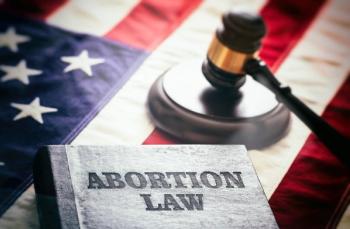
Discordant NIPT and ultrasound results from vanishing twin pregnancy
DNA from a genetically dissimilar deceased twin may be counted as part of total fetal DNA, leaving to incorrect test results for the surviving fetus.
By Bowdoin Su, MD1; Mitchell Nudelman, MD2; Melissa Stosic, MS1; Zachary Demko, PhD1; and Susan J. Gross, MD1
1Natera, San Carlos, CA; 2Bellegrove OBGYN, Bellevue, WA
The Case
In this case, the patient was a 35-year-old G2P1 who presented to her obstetrician for routine prenatal care at 9 weeks’ gestation. She had been referred by her infertility doctor after a successful in vitro fertilization-conceived pregnancy; two embryos were transferred. One week prior to being seen, ultrasound at another facility had revealed a “vanishing twin” pregnancy.
After discussing options for prenatal screening of chromosomal aneuploidies (because of her advanced maternal age), the patient chose noninvasive prenatal testing (NIPT). The PanoramaTM test (Natera, Inc.; San Carlos, CA), a single-nucleotide polymorphism (SNP)-based NIPT, was ordered 1 week later and reported, “Results are consistent with a possible triploid or vanishing twin pregnancy. Follow-up counseling and testing is recommended.”
At 13 weeks, the patient’s physician ordered a different NIPT (non-SNP-based, and counting-based). That NIPT reported a finding of a “normal male” fetus. At 17 weeks, the patient had another ultrasound. In contrast to the counting-based NIPT results, this ultrasound showed a normal female fetus.
Given the discrepancy between the 13-week counting-based NIPT (male) and the 17-week ultrasound (female), amniocentesis for definitive chromosomal studies was offered to the patient.
She declined, and at 39 weeks, delivered a phenotypically normal female baby. Peripheral blood revealed a 46,XX chromosomal complement.
Discussion
One in 30 live births is from a twin gestation pregnancy. Twins are even more common early in gestation-36% of first-trimester twin pregnancies result in one deceased (“vanishing”) twin.1 Because a “vanished” twin often had a chromosomal aneuploidy, such pregnancies are acknowledged to be a source of false-positive NIPT results.
Several studies reporting on commercial experiences with NIPT using a counting method attribute 15% to 33% of false-positive calls to the phenomenon of vanishing twin pregnancies.2,3 Multiple accounts have demonstrated that cell-free fetal DNA (cffDNA) from the demised twin can be detected 8 weeks or longer after demise.4,5
Counting-based NIPT methods can determine gender early in gestation with high accuracy (>98%).6,7 However, because such methods are based on counting total circulating DNA, they cannot distinguish the source of additional DNA sequences beyond the viable fetus, whether maternal or a vanishing twin. Thus, cffDNA from a genetically dissimilar deceased twin could be counted as part of the total DNA, and could lead to incorrect test results for the surviving fetus.
Commentary
by Joe Leigh Simpson, MD
Dr. Simpson is Executive Associate Dean for Academic Affairs and Professor of Obstetrics and Gynecology and Human and Molecular Genetics at Florida International University College of Medicine, Miami. He is also a member of the Contemporary OB/GYN Editorial Board.
He reports receiving speaker fees from ESHRE/American Society for Reproductive Medicine.
SNP-based NIPT directly interrogates DNA bases, and can detect differences among individuals. This permits recognition of extra haplotypes.8 Additional DNA signatures beyond that expected of a mother and a single euploid fetus could be the result of a dizygotic twin pregnancy with both twins viable, dizygotic twins one deceased (vanishing), and either diandric or digynic triploidy.
Clinical review is needed to differentiate among these possibilities. Although a SNP-based NIPT method cannot provide a diagnosis, its use can eliminate false-positive results by alerting the practitioner to an abnormal clinical situation that requires follow up. A SNP-based method also has fewer aberrant gender calls.8-10
In the case presented here, the most plausible explanation for the conflicting reports is that the vanishing twin was male, but that its placenta continued to release cffDNA-derived Y DNA into the maternal circulation. If the vanishing twin were trisomic, that could have led to a potentially more serious false-positive error with a counting-based NIPT; in contrast, SNP-based NIPT methods are able to detect such a vanishing twin case.
Avoiding this pitfall is possible with a SNP-based NIPT as the primary screening test, particularly when a vanishing twin pregnancy has been previously diagnosed on ultrasound.
References
1. Multifetal gestations: twin, triplet, and higher-order multifetal pregnancies. Practice Bulletin No. 144. American College of Obstetricians and Gynecologists. Obstet Gynecol. 2014; 123:1118-1132.
2. Futch T, Spinosa J, Bhatt S, de Feo E, Rava RP, Sehnert AJ. Initial clinical laboratory experience in noninvasive prenatal testing for fetal aneuploidy from maternal plasma DNA samples. Prenat Diagn. 2013 June;33(6):569-574.
3. Porreco RP, Garite TJ, Maurel K, Marusiak B; Obstetrix Collaborative Research Network, Ehrich M, van den Boom D, Deciu C, Bombard A. Noninvasive prenatal screening for fetal trisomies 21, 18, 13 and the common sex chromosome aneuploidies from maternal blood using massively parallel genomic sequencing of DNA. Am J Obstet Gynecol. 2014 Oct;211(4):365.e1-12.
4. Gromminger S, Yagmur E, Erkan S, et al. Fetal aneuploidy detection by cell-free DNA sequencing for multiple pregnancies and quality issues with vanishing twins. J Clin Med. 2014; 3:679-692.
5. Kurnow KJ, Wilkins-Haug L, Ryan A, et al. Detection of triploid, molar, and vanishing twin pregnancies by a single-nucleotide polymorphism-based noninvasive prenatal test. Am J Obstet Gynecol. 2014 Oct 15. [Epub ahead of print]
6. Mazloom AR, Džakula Ž, Oeth P, et al. Noninvasive prenatal detection of sex chromosomal aneuploidies by sequencing circulating cell-free DNA from maternal plasma. Prenat Diagn. 2013 Jun;33(6):591-597.
7. Nicolaides KH, Musci TJ, Struble CA, Syngelaki A, Gil MM. Assessment of fetal sex chromosome aneuploidy using directed cell-free DNA analysis. Fetal Diagn Ther. 2014;35(1):1-6.
8. Pergament E, Cuckle H, Zimmermann B, et al. Single-nucleotide polymorphism-based noninvasive prenatal screening in a high-risk and low-risk cohort. Obstet Gynecol. 2014 Aug;124(2 Pt 1):210-218.
9. Samango-Sprouse C, Banjevic M, Ryan A, et al. SNP-based non-invasive prenatal testing detects sex chromosome aneuploidies with high accuracy. Prenat Diagn. 2013 Jul;33(7):643-649.
10. Lau TK, Cheung SW, Lo PS, et al. Non-invasive prenatal testing for fetal chromosomal abnormalities by low-coverage whole-genome sequencing of maternal plasma DNA: review of 1982 consecutive cases in a single center. Ultrasound Obstet Gynecol. 2014 Mar;43(3):254-264.
Newsletter
Get the latest clinical updates, case studies, and expert commentary in obstetric and gynecologic care. Sign up now to stay informed.









